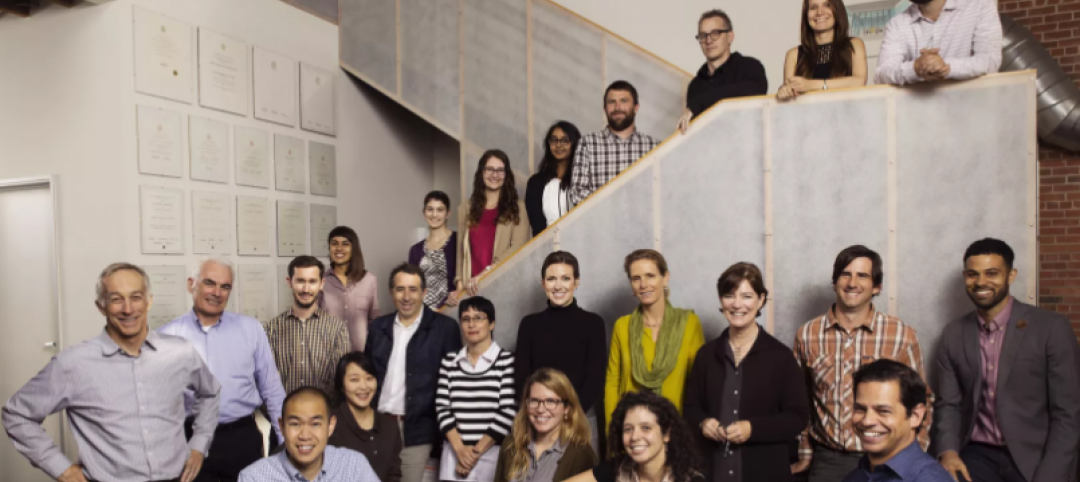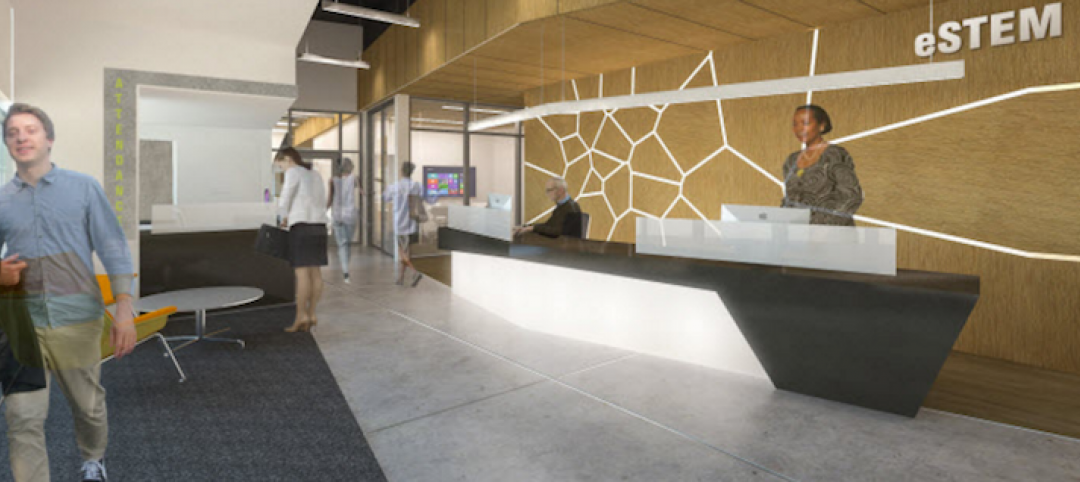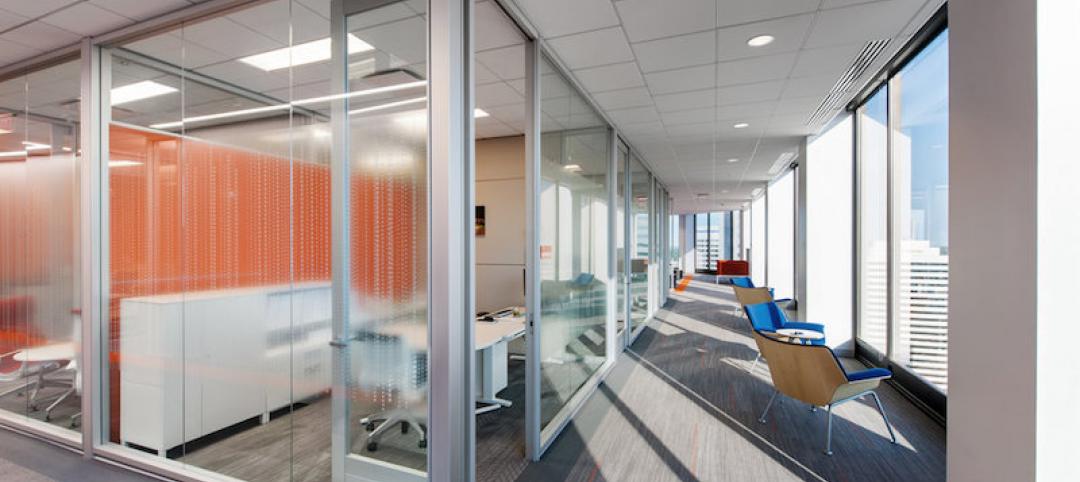NELSON, the Philadelphia-based interior design firm celebrating its 40th anniversary this year, has merged with two other firms, Cope Linder Architects and KA Architecture, to position itself as a full-service architectural and design outfit across multiple nonresidential building types.
The combinations became effective on June 1.
Founded in 1977, NELSON has steadily expanded for more than 15 years, primarily through acquisitions. In the past two years alone, it bought EHS Design and Marvin Stein Associates in Seattle, AAI in San Jose, and VeenendaalCave in Atlanta.
John “Ozzie” Nelson, Jr., NELSON’s Chairman and CEO, tells BD+C that his company’s marriages with Cope Linder and KA are the first of a series of mergers that NELSON plans to announce this year. Nelson says his company in 2017 would double its revenue to around $200 million and its workforce to “north of 1,200” from 625 at the start of the year.
Nelson and Ian Cope, AIA, LEED AP, Principal with Cope Linder Architects, had been talking, on and off, for 27 months about bringing their respective companies together. Cope says his firm had also been approached by two other suitors—including a Canada-based engineering firm—which it ultimately rebuked, he says, because it feared it might lose its identity with clients “who are concerned about all of this massive absorption of AEC firms” going on in the industry.
The addition of 50-year-old Cope Linder, also based in Philadelphia, makes NELSON that city’s third-largest studio, with more than 125 employees there. Cope Linder is best known for its work in the commercial, hospitality, gaming, and entertainment sectors. One of the first projects to be completed under the combined company will be the 51-story, 773,000-sf W and Element Hotel in Philadelphia, which opens next year.
Craig Wasserman, RA, Executive Vice President at KA Architecture, says his firm has been predominantly a core and shell builder and planner. It has tried to diversity on its own, “but it never worked out,” he explains. The merger with NELSON, on the other hand, “is the perfect compliment,” and allows KA to go to market as a full-service firm. “We’ve been telling our clients about this merger, and their reaction has been fantastic,” says Wasserman.
Cleveland-based KA Architecture—which was founded in 1960 and, prior to the merger, was into its third generation of ownership—has lent its design services to, among other projects, retail centers, mixed-used developments, and hospitality. Its merger with KA represents Nelson’s third location in the Midwest. The 1.3-million-sf Liberty Center in San Francisco will be the first major project completed under the new brand KA Architecture, A Nelson brand. (KA is the Executive Architect on this project.)
KA and Cope Linder are also forming a core-and-shell practice within NELSON, says Wasserman. Nelson states the combinations place NELSON more competitively into the high-rise architecture market.
The mergers also allow NELSON to launch a newly formed Hospitality Practice, and to beef up its Retail Practice.
Merging for the right reasons
Diversification is certainly one of the drivers behind NELSON’s acquisitive streak. For example, it is close to announcing another acquisition of a firm in New York that surveys and inspects buildings. Under Title 11, buildings over six stories high are required to be surveyed every five years. The firm NELSON would acquire already handles 800 of the 14,500 buildings in New York that fall under that regulation.
NELSON also runs a $13 million MEP engineering firm under a separate brand. But Nelson has never been a believer in combining architecture with other disciplines, such as engineering or building surveying, under one roof. He thinks the better solution to integrate vertically is to create holding companies to run those businesses separately, as it will the core-and-shell entity.
“Culture trumps everything else” when it comes to merging companies, says Nelson, speaking from experience. “It’s important for companies to look at the complete nature of coming together, and to be realistic.” He observes that, too often, smaller firms want to merge with larger firms just to take advantage of their marketing and sales clout without giving enough thought to how such a move might impact their employees and customers.
Nelson confirms that the managements of Cope Linder and KA are remaining with the company. He says NELSON looks for acquisition partners whose managements want to stay on with the combined firm.
When asked why so much AEC consolidation seems to be happening all of a sudden, Nelson says that relationships between firms and their clients don’t matter as much as they used to. “Everything has become a beauty competition,” and size, he says, has become a more important criterion to be considered for certain projects.
In the future, he says that NELSON will be looking to strengthen its position in Texas and the Washington, D.C. market.
Related Stories
Building Team | Jan 3, 2017
How does your firm’s hit rate stack up to the AEC competition?
If your firm is not converting at least a third of project proposals when competing for new work, it may be time to reassess your marketing tactics and processes.
Architects | Dec 9, 2016
Leddy Maytum Stacy Architects receives the 2017 AIA Architecture Firm Award
LMSA is the 54th AIA Architecture Firm Award recipient.
| Dec 8, 2016
Paul Revere Williams, FAIA, awarded 2017 AIA Gold Medal
The Gold Medal honors an individual whose significant body of work has had a lasting influence on the theory and practice of architecture.
Building Team | Dec 8, 2016
The NYC Public Design Commission recognizes 12 projects with its 2016 Excellence in Design Award
2016 marked the 34th year the Public Design Commission has handed out its Excellence in Design Awards.
Education Facilities | Dec 7, 2016
How corporate design keeps educational design relevant
Learning is a lot like working; it varies daily, ranges from individual to collaborative, formal to informal and from hands on to digital.
| Dec 6, 2016
Workplace pilots: Test. Learn. Build
Differentiated from mock-ups or beta sites, workplace pilots are small scale built work environments, where an organization’s employees permanently reside and work on a daily basis.
Building Team | Dec 2, 2016
Alexandria Real Estate Equities becomes first real estate investment trust to be named a First-in-Class Fitwel Champion
Fitwel building certification was developed to foster positive impacts on building occupant health and productivity through improvements to workplace design and policies.
Government Buildings | Dec 1, 2016
Unlocking innovation in the government workplace
Government work settings ranked the lowest in their effectiveness across the four work modes: focus (individual) work, collaboration, socializing (informal gathering that fosters trust and teamwork) and learning.
Architects | Nov 20, 2016
D.C.’s first distillery-eatery taps into a growing trend
The stylish location targets customers craving craft spirits and late-night dining.
Architects | Nov 18, 2016
A Frank Lloyd Wright building in Montana will soon be demolished, or will it?
The building is one of only three Frank Lloyd Wright-designed buildings in the state.















